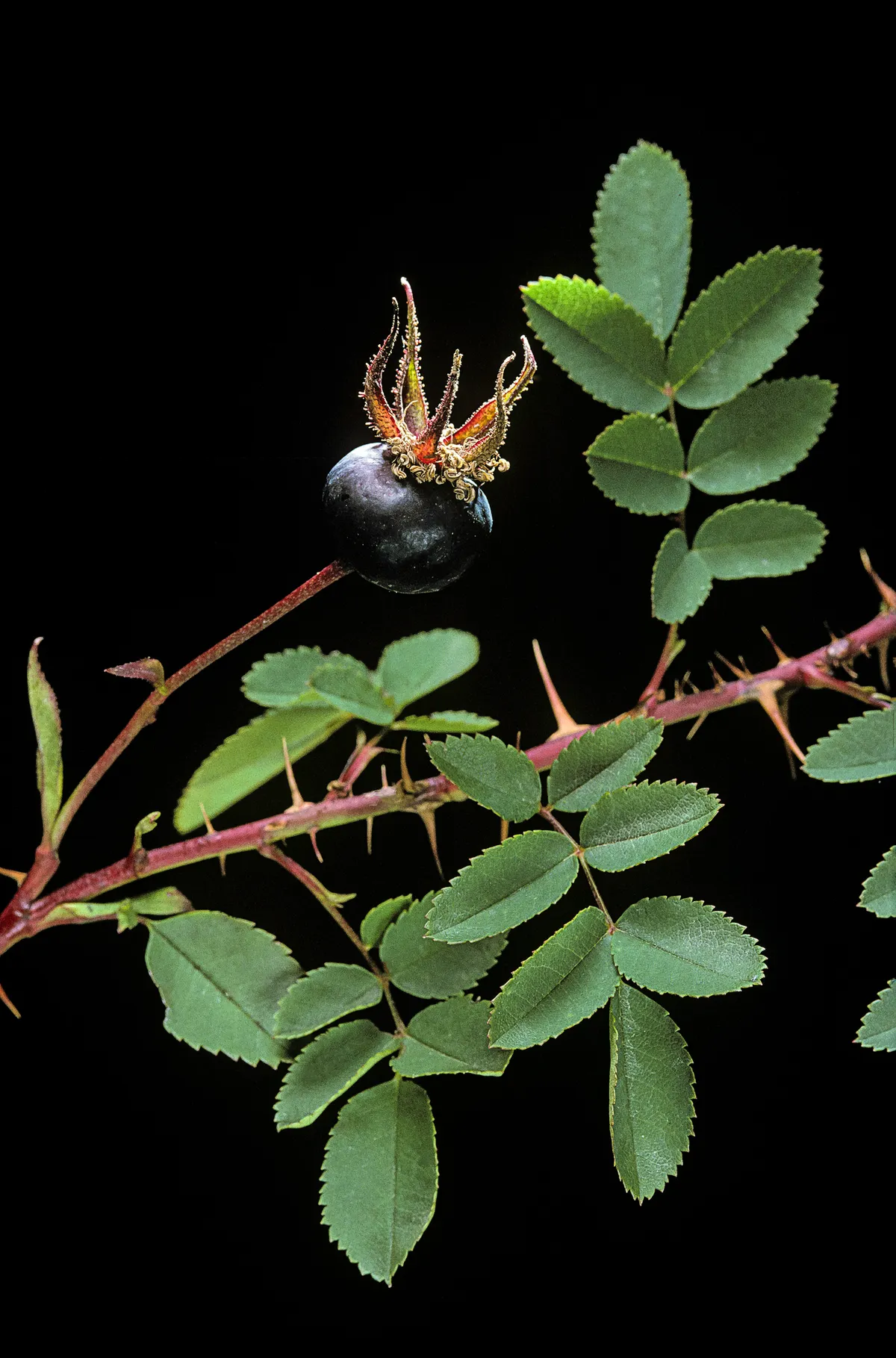Does the UK have many wild roses?
Think of British native wild roses and your mind may turn to dog rosa (Rosa canina) or the field rose (R. arvensis). But there are actually a total of 14 different species of rose native to Britain.
These include the delicate scented sweet briar (R. rubiginosa), the Sherard’s downy rose (R. sheradii), a plant common in the north of Britain and the burnet rose (R. spinosissima syn R. pimpinellifolia, pictured below) the white rose of Scotland, found in coastal regions, with its near black hips.
Wild roses are useful for root stock, giving a robust base on which to graft more delicate cultivars. Certain genes in wild roses are also important, the burnet rose has been used to breed garden roses since Georgian times.
However, as most wild roses will only flower once, most cultivated roses can trace their lineage back to R. chinensis a Chinese rose which has the rare genetic trait of flowering throughout the year.
How to identify dog rose
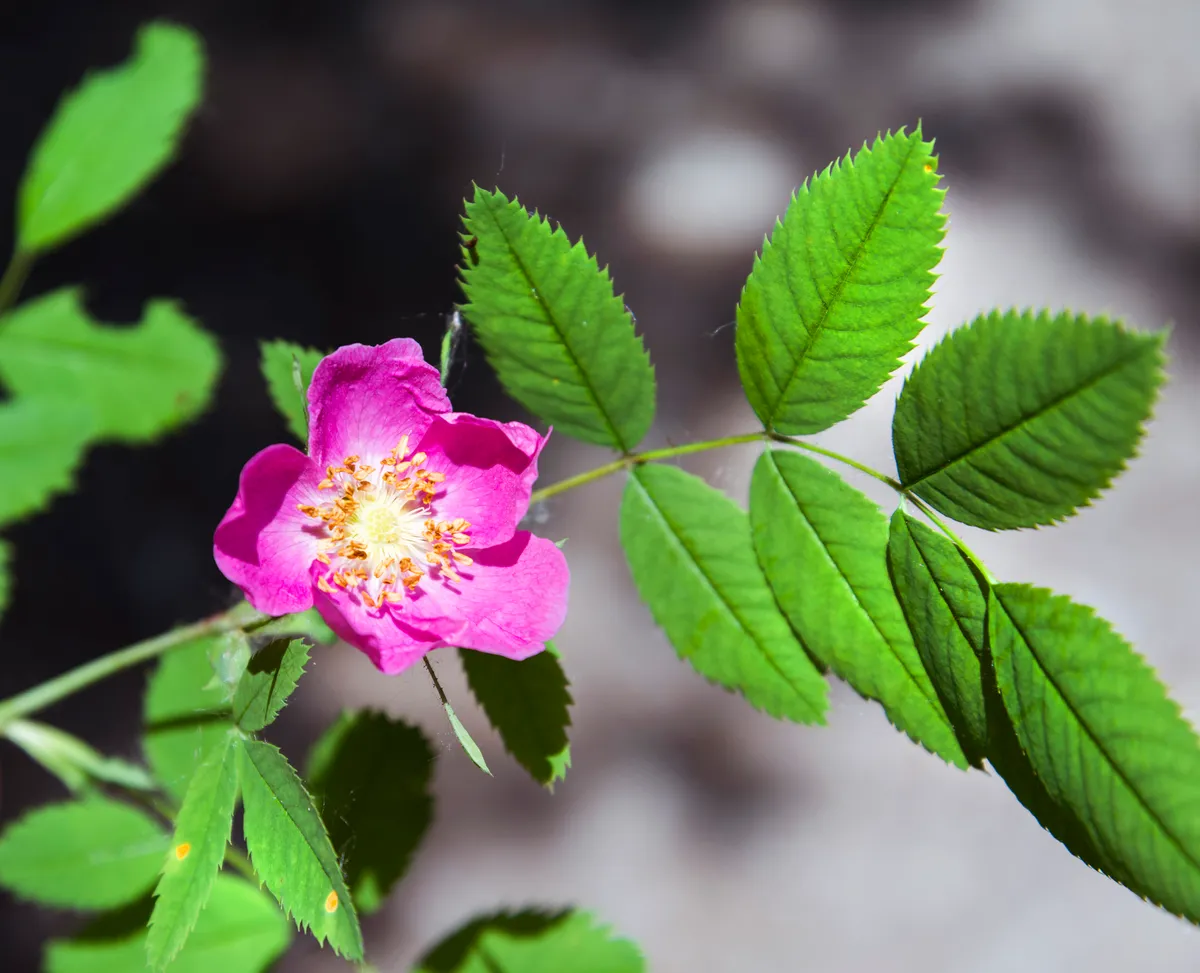
A familiar thorny plant of the hedgerows, dog rose has large pink or white five-petalled flowers. However, it does look quite similar to other wild roses, such as the field rose which flowers earlier than the dog rose.
The fruits of the dog rose, and other roses, are known as rosehips. They are bright red and oval in shape.
Why do rosehips cause itching?

After flowering, all roses, domestic and wild, produce an edible red-orange hip or berry high in vitamin C. It’s a well-known fact that the seeds of these hips are covered in tiny, irritant hairs which are sometimes used as itching powder.
But what causes this itching? Unlike nettle, the hairs do not cause an allergic reaction or sting. Instead, they are stiff and pointed, mechanically rubbing against the skin to cause itching, much like a woolly jumper on bare skin.
Rosehip syrup ideas
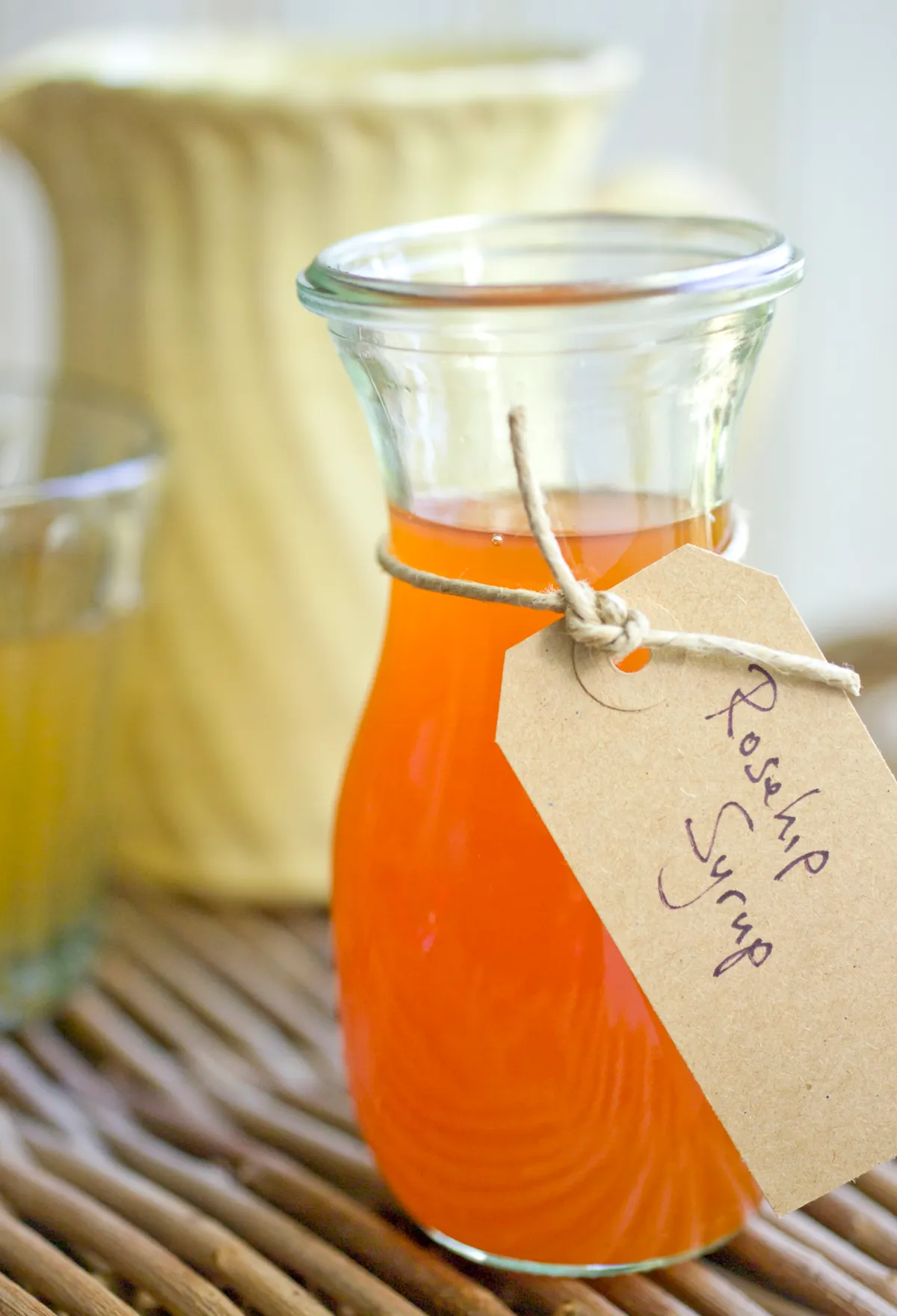
With a bit of care to filter out the tiny, itching hairs within the fruit, rosehips can be mashed up and stewed to make sweet and tasty rosehip syrup – great over pancakes or ice cream, or diluted with hot water for a cosy winter drink. Many online articles sing the praises of this syrup for its health benefits – particularly that it is high in vitamin C.
In fact, during World War II, enemy blockades prevented the importation of fruits high in vitamin C, such as oranges and lemons. And as a result, the government at the time feared the population would suffer nutritional illnesses, such as scurvy. Their solution was the mass-scale picking of rosehips to make rosehip syrup.

Although the syrup-making process usually involves boiling the pulped rosehips and depleting much of the vitamin C, there is so much of this vitamin in a hip, that there is still enough left in the end product to prevent nutritional problems.
What is the weird growth on dog rose?
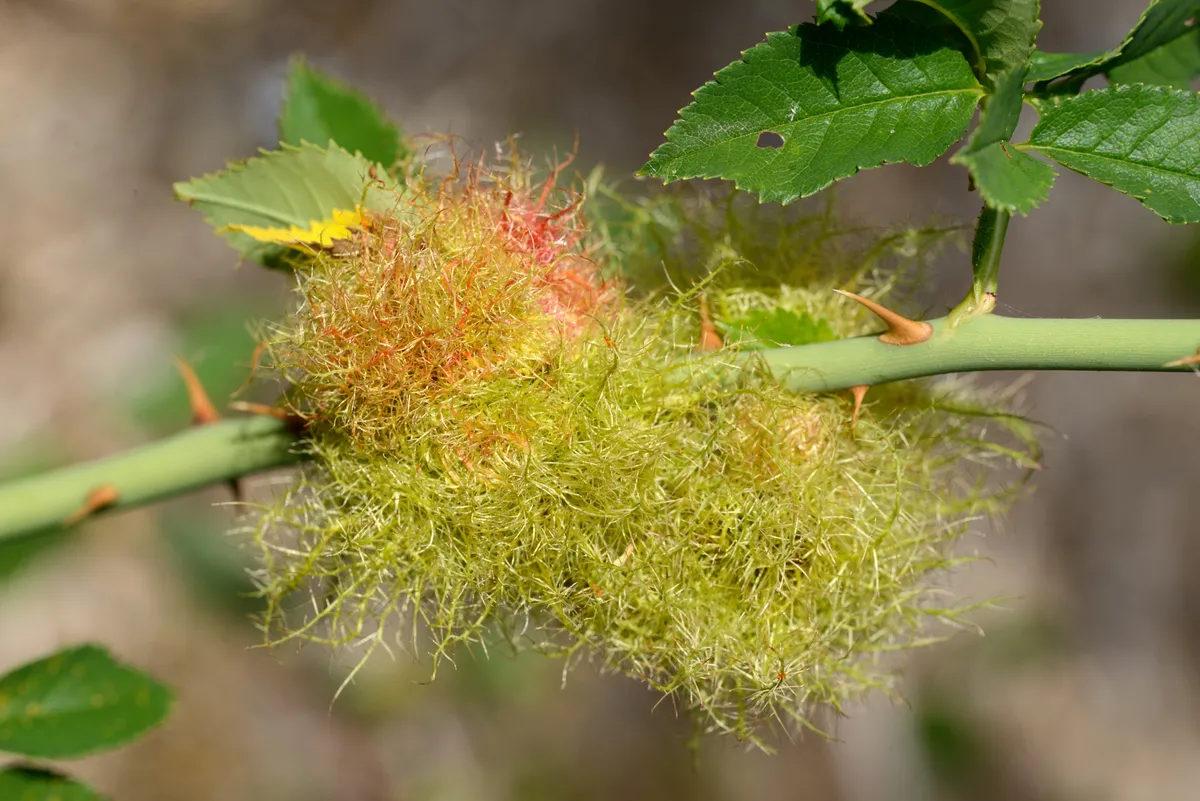
Looking like a ball of moss growing out of the stem of a rose, the rose bedeguar gall is also known as a robin’s pincushion. Like all plant galls, it is the modification of the plant by another organism.
In this case, it’s a tiny wasp called the bedeguar wasp (Diplolepsis rosae). In spring, a female wasp lays her eggs onto the developing leaf bud of the rose. These hatch into small larvae which cause the bud to swell and create chambers. The gall starts off green, before turning pink and then red.
The wasp overwinters within the gall as a pre-pupa before emerging in the following spring.
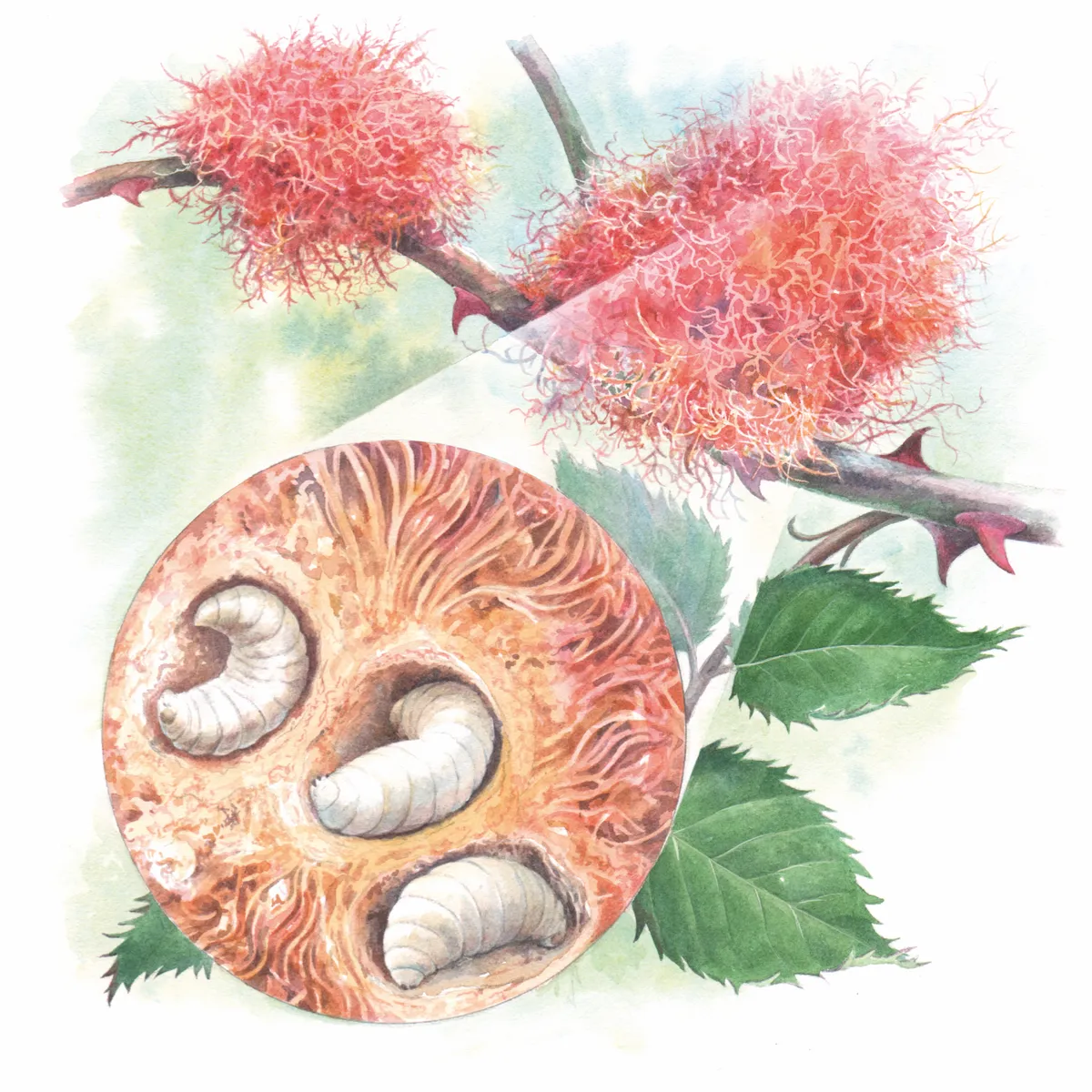
Main image: Dog rose flower. © Jacky Parker Photography/Getty

